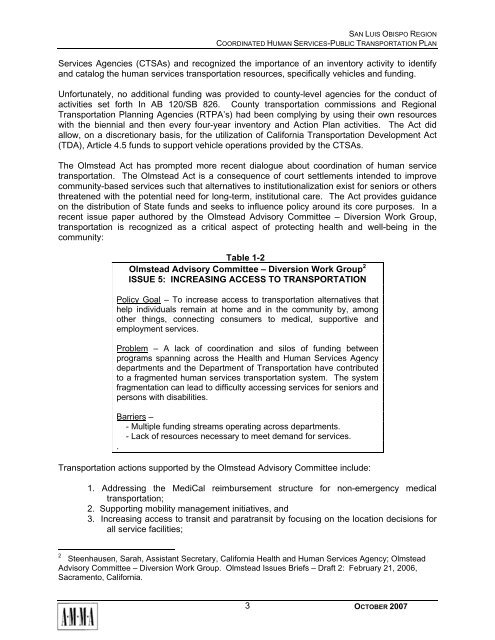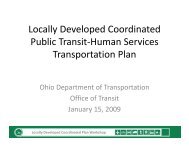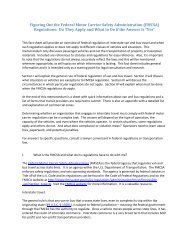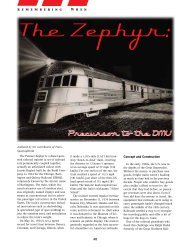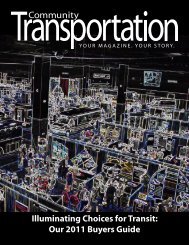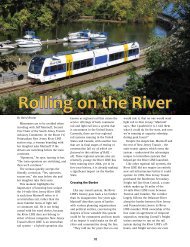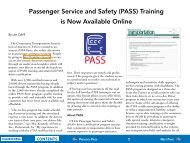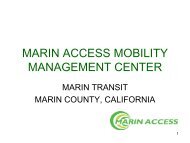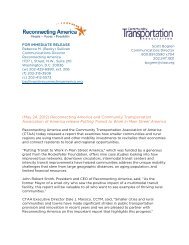San Luis Obispo - Caltrans - State of California
San Luis Obispo - Caltrans - State of California
San Luis Obispo - Caltrans - State of California
Create successful ePaper yourself
Turn your PDF publications into a flip-book with our unique Google optimized e-Paper software.
SAN LUIS OBISPO REGION<br />
COORDINATED HUMAN SERVICES-PUBLIC TRANSPORTATION PLAN<br />
Services Agencies (CTSAs) and recognized the importance <strong>of</strong> an inventory activity to identify<br />
and catalog the human services transportation resources, specifically vehicles and funding.<br />
Unfortunately, no additional funding was provided to county-level agencies for the conduct <strong>of</strong><br />
activities set forth In AB 120/SB 826. County transportation commissions and Regional<br />
Transportation Planning Agencies (RTPA’s) had been complying by using their own resources<br />
with the biennial and then every four-year inventory and Action Plan activities. The Act did<br />
allow, on a discretionary basis, for the utilization <strong>of</strong> <strong>California</strong> Transportation Development Act<br />
(TDA), Article 4.5 funds to support vehicle operations provided by the CTSAs.<br />
The Olmstead Act has prompted more recent dialogue about coordination <strong>of</strong> human service<br />
transportation. The Olmstead Act is a consequence <strong>of</strong> court settlements intended to improve<br />
community-based services such that alternatives to institutionalization exist for seniors or others<br />
threatened with the potential need for long-term, institutional care. The Act provides guidance<br />
on the distribution <strong>of</strong> <strong>State</strong> funds and seeks to influence policy around its core purposes. In a<br />
recent issue paper authored by the Olmstead Advisory Committee – Diversion Work Group,<br />
transportation is recognized as a critical aspect <strong>of</strong> protecting health and well-being in the<br />
community:<br />
Table 1-2<br />
Olmstead Advisory Committee – Diversion Work Group 2<br />
ISSUE 5: INCREASING ACCESS TO TRANSPORTATION<br />
Policy Goal – To increase access to transportation alternatives that<br />
help individuals remain at home and in the community by, among<br />
other things, connecting consumers to medical, supportive and<br />
employment services.<br />
Problem – A lack <strong>of</strong> coordination and silos <strong>of</strong> funding between<br />
programs spanning across the Health and Human Services Agency<br />
departments and the Department <strong>of</strong> Transportation have contributed<br />
to a fragmented human services transportation system. The system<br />
fragmentation can lead to difficulty accessing services for seniors and<br />
persons with disabilities.<br />
Barriers –<br />
- Multiple funding streams operating across departments.<br />
- Lack <strong>of</strong> resources necessary to meet demand for services.<br />
.<br />
Transportation actions supported by the Olmstead Advisory Committee include:<br />
1. Addressing the MediCal reimbursement structure for non-emergency medical<br />
transportation;<br />
2. Supporting mobility management initiatives, and<br />
3. Increasing access to transit and paratransit by focusing on the location decisions for<br />
all service facilities;<br />
2<br />
Steenhausen, Sarah, Assistant Secretary, <strong>California</strong> Health and Human Services Agency; Olmstead<br />
Advisory Committee – Diversion Work Group. Olmstead Issues Briefs – Draft 2: February 21, 2006,<br />
Sacramento, <strong>California</strong>.<br />
3<br />
OCTOBER 2007


